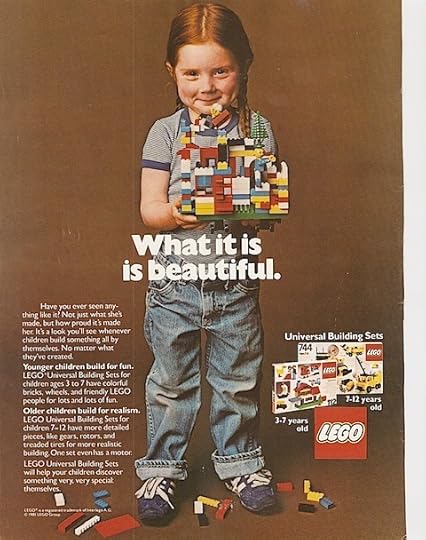Daniel Nayeri's Blog, page 2
October 28, 2011
The Art of Straw House, Wood House, Brick House, Blow
As I mentioned in the last post, eight incredible artists created works inspired by Straw House, Wood House, Brick House, Blow, and their art was displayed in the International Arts Movement Gallery at the launch party. I am so grateful to all my friends for contributing pieces, and I wanted to spotlight each artist on my blog so that you can see the beautiful work. Many thanks to Makoto Fujimura, Susan Anderson, Maggie Heinze, Genevieve Santos, Lauren Vajda, Regina Roff, Emma SanCartier, Rachel Bee Porter, Teen Liu, and Blake Henry. So, without further ado, the artists of the SHWHBHB gallery:

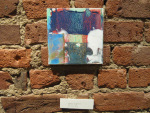

[image error]
[image error]



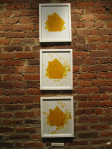

[image error]
 [image error]
[image error]
 [image error]
[image error]




October 27, 2011
Launch Party
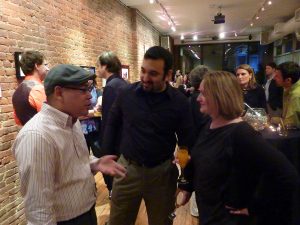
Guests begin to arrive at the SHWHBHB Release Party at the International Arts Movement Gallery
You can't hang around New York too long without meeting a lot of really talented people. So when The International Arts Movement Gallery in Manhattan hosted a launch party for Straw House, Wood House, Brick House, Blow we asked some of our friends if they'd join us and showcase their brilliant work. You've already seen the great book trailers from Plywood Pictures, which we viewed on the big screen at the party,
but there are also eight visual artists who graciously contributed art inspired by Straw House, Wood House, Brick House, Blow to the gallery. It was such an honor to have these incredibly talented people take time out of their schedules, and everyone was thrilled with the final art. I've included some pictures, but stay tuned to the blog…soon I'll have a post up describing the gallery and the artists in more detail.
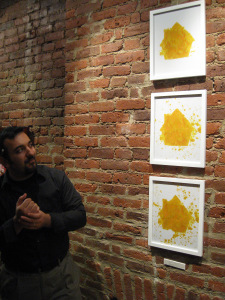
One of the eight pieces of art inspired by Straw House, Wood House, Brick House, Blow.
The theme of the night was, as you can imagine, Straw House, Wood House, Brick House, Blow, and it was reflected in everything from the décor – the books were balanced on hay bales, and sunflowers and hydrangeas gave the room a more natural feeling – to the refreshments, and the brick walls of the gallery certainly helped to set the mood.
We served a different drink for each novella – mango passion fruit bellinis for Straw House, rum and coke for Wood House, strawberry bellinis for Brick House, and mulled hot apple cider for Blow (you had to blow on it to cool it off…get it? hyuk hyuk  ).
).
The rest of the night was devoted to talking, noshing, and book signing. Everyone posed with the book – you'll have to check out the Facebook page to see all the pictures. All in all, the party was a huge success, and it was wonderful to
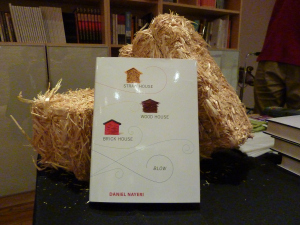
Straw House, Wood House, Brick House, Blow for sale!
be able to thank everyone who came together to help make Straw House, Wood House, Brick House, Blow a reality.





 [image error]
[image error]
[image error]
[image error]
September 27, 2011
STRAW HOUSE VIDEOS ARE HERE!
I have thoughts on book trailers. I'll probably post them soon. Mostly, they revolve around how hard they are. So, when it came time to create the trailers for STRAW HOUSE, WOOD HOUSE, BRICK HOUSE, BLOW, I was insanely lucky to get the pros at Plywood Pictures to do what they do best.
TOY FARM
With unbelievable production design by Sara K White. Haunting soundtrack by Carey Wallace and Mark Wallace, The Wallace Bros.
OUR LADY OF VILLAINS
I can't stop raving about the CG effect at the end of this one. It's hard to convey JUST how hard it is. With a moving camera, a sprinting actor, and a real background (no green screen here), this effect is INSANE. Adam Browne had to go through every single frame (24 frames per second of video), and cut the guy out of the background. Unbelievable.
WISH POLICE
Rube Goldberg machines are the BEST! I spend way too long on Youtube watching them. This video was a great excuse to make one–a real one, by the way, that worked.
DOOM WITH A VIEW
I love the way Matt Hobby goes, "cheers" and trails off like he's trying to reel the words back into his mouth. Cracks me up every time. All three amazing comedians (Matt Hobby, Mary Grill, and Chris Roberti) are members of an improv group here in NYC.








September 6, 2011
Editing Books for Girls (When You're a Boy)
There's a lot to be said about the publishing industry as relates to gender. I'll try not to wade into them all. For now, I just want to bring up a small part of it, in order to highlight how much I adore the image above.
As a male editor in children's books / YA books, I get a lot of questions around the fact that there aren't a lot of male editors in the children's books / YA books. I get a lot of submissions from agents that are "perfect for boys!" and I'm very thankful for it, because I would love to find perfection in anything.
And I always get a question about whether or not I'm looking for "girl's fiction." I have no idea what this means. I do know what it's supposed to mean. I understand the connotation, if not the denotation of the phrase. But I don't want to give the phrase safe passage in its attempt to communicate with me. I want to say, "huh?"
But I don't, because it's annoying to pretend that you don't understand something when really you just disagree with the premise. So I usually say that yes, I do acquire girl's fiction. Though I tend to dislike "strong female characters" that have been so ludicrously juiced with testosterone that their "strength" isn't much more than a bunch of arm-wrestling matches with Michael Clark Duncan. And yes, I would adore, adore, adore, any manuscript about anyone that is well written. Even if it's a girlie book.
But all of it aside…I wish I could just hand everyone this LEGO ad from 1981 and say, "THIS! I want books about and for THIS girl." I love the smile. I LOVE that the advertisers call it "beautiful." I love that it isn't militantly "anti-pink" or a statement against femininity. I love how completely oblivious the girl seems to be to all the conversation that publishers, sociologist, media analysts, etc have about media. I love her sneakers, and the tree planted on top of the man's head.
More of this ad, please. More books like the ones she'd read, or live in.








August 17, 2011
STRAW HOUSE party
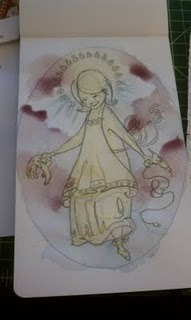
From "Our Lady of Villains" in STRAW HOUSE, WOOD HOUSE, BRICK HOUSE, BLOW
More info is definitely TK about the upcoming book, STRAW HOUSE, WOOD HOUSE, BRICK HOUSE, BLOW. But for now, I just want to share some gorgeous illustration by brilliant artist/designer Regina Roff. This is part of an art show that will open here in a NY gallery to correspond with the STRAW HOUSE launch party. So basically, it'll be a book party, and an art show, with an open bar. For more about her piece, check out her site!








February 25, 2011
WOA!
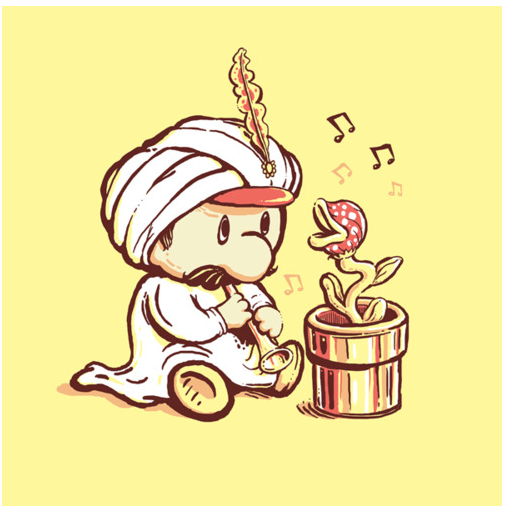 First up in the Wall of Art: Lucas de Alcântara
First up in the Wall of Art: Lucas de Alcântara
Mario as the charmer of piranha plants? More like Mario as the charmer of OUR HEARTS!








Wall of Art
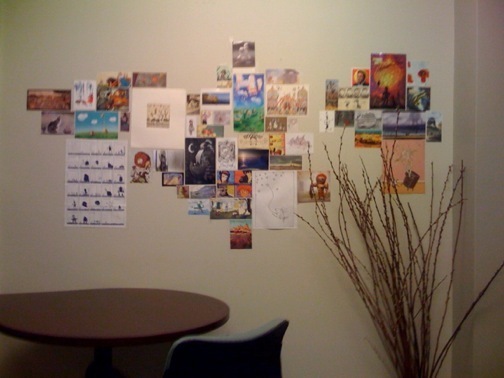
The Wall of Art
Part of my job is to constantly dig through online profiles of illustrators, agency galleries, and student showcases, to look for fresh talent. It's a time-consuming part of the job, but contacting a young artist out of the blue about a possible book project, and hearing his or her reaction is easily one of the most rewarding aspects.
On one of the walls of my office is a collection of various artists I admire, many whom I've worked with, and many more that I dream to collaborate with in the future. It's the "Wall of Art." I try to add something new each week. I figure, I'll also post it here, as a virtual WOA.
* If you have any submissions for WOA, feel free to send them to the question line (in my "about" section). A link would be much kinder than a 5MG file.








December 30, 2010
eBook Piracy Solved!
A while back, I remember a New York Times article on the popularity of the ebook (this was before Christmas of 2009, or the "Christmas of the Kindle"). The article was correctly predicting that Kindles and various other e-readers were only becoming more popular, etc. Nothing crazy. But one part that jumped out at me was a quote from an unspecified publishing executive who thought that the book industry wouldn't have the problems of the music industry with file sharing and piracy because–and I'm paraphrasing here–the "nature" of the industries are so different. It seemed like wishful thinking at the time.
Since then, we've seen that as ebooks become more and more popular, so will piracy. In 2010, the first major case of book piracy was Dan Brown's THE LOST SYMBOL, which had hundreds of thousands of downloads just days after it launched. I tend to think he got off easy. The workflow of the book industry is actually much more open than, say, films. Obviously, pubs will have to crack down on who gets to see MS files, but that doesn't change the fact that an MS file is just a few kBs. It can be emailed a thousand times. A movie file is just a little harder to send around in the early goings, since they're GBs. And even so, films like "The Incredible Hulk," and "Wolverine" had pirated copies online weeks before their launch dates.
So basically, books are even easier to pirate than films or music. The files are super small, and the industry doesn't have very good security measures. Also, they're generally more expensive than a DVD or an album, so all the more reason to pirate them.
But wait, there's one advantage that books have…which is usually considered a disadvantage…they're long! They take hours to consume! No one could ever read all of them! And that is the key–IMHO–to limiting book piracy.
I don't know about you, but when I download films…erm…just kidding! I mean when I hear about people illegally downloading films, the biggest issue is getting corrupt files. They spend all this time downloading the thing, and the colors are off, or there's no sound. The only way to solve this problem is for file sharers to view the file and verify that it's good. Same with music.
But imagine if pirates had to read an entire book to make sure the content was correct. (Actually, it'd be pretty awesome if people starting reading tons of books out of spite.)
So here is what I propose: Publishers could pay someone to create hundreds of differently corrupted manuscript files and release them online. The ending could be the ending to MOBY DICK. Chapter 13 could be nothing but ipsum lorem. Every pages could be from a different book of the publisher's spring catalog. It doesn't matter. It would simply render the file unreadable. Sure, you could parse together that last installment of the HUNGER GAMES, but why would you want to?
The length of the content and the relative difficulty for pirates to do quality assurance could allow publishers to flood the black market with fake files. Any real copies of the leaked MS would get drowned out. At least, it would be much harder to find.
I know BitTorrents have metrics in place to weed these people out. Eventually, your seed to leech ratio would get all whacked out, but I think there are ways around that. Obviously, it would be a full-time job for someone to juggle different accounts, etc. Also, I'm speaking out of my depth here, so maybe someone can explain that part to me.
I'd love to talk to someone about this. I wonder if I'm just missing some obvious reason why it wouldn't work. If it does work, however, I submit that we call it, "Spartacussing." That or, "Polyjuicing."
Note: My brother-in-law is my tech guru and this idea actually originated when he told me that there is a trend similar to this in digital information security. Basically, the idea of securing something used to be all about locking it up in the toughest safes imaginable (both literal and metaphorical). But now, one form of securing something is to take the file and throw it into a sea of other stuff. No one can possibly wade through all the randomly generated junk to find the valuable information, but basically, it's right out in the open. It just happens to be indistinguishable from everything else.
I may have misunderstood a lot of what he said–I often do–cause he'll mention something crazy sci-fi and I tune the rest out.








December 13, 2010
"Derivative" vs "Familiar"
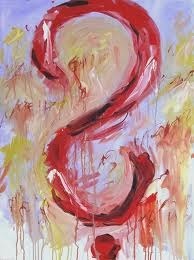 I've been going out with submissions (shown it to agents, friends, etc) and I've gotten positive response so far for my book. But some people have mentioned that a few parts are "familiar". Is that just a nice way of saying that character is derivative? Thanks.
I've been going out with submissions (shown it to agents, friends, etc) and I've gotten positive response so far for my book. But some people have mentioned that a few parts are "familiar". Is that just a nice way of saying that character is derivative? Thanks.
–Jared, NY
Sort of. Yes.
But I think there is also an important distinction between the words "derivative" and "familiar" — at least, there is in the way that I use them. I think of "derivative" as an issue of craft/aesthetics, and "familiar" as an issue of the marketplace.
When I say that a work or part of a work seems derivative, I'm not saying that it's simply unoriginal. I'm saying that the author doesn't seem to have a broad foundation, and seems to have a particular artist that he or she is aping.
For example, ELOISE came along in 1955 and had a little girl speaking directly to the audience. She was brash, spoiled, and unrepentant. The book broke a TON of rules for picture books….and immediately, a style like that would spawn a million imitative submissions. Why? Because a bunch of people would read it, and without realizing all the ways in which the story was iconoclastic, they'd decide to write their own picture book. Because they didn't have a broad foundation in the craft, they simply started with ELOISE and went from there. But to truly love and understand ELOISE, you had to have read just a few of the titles she built on. You had appreciate all the rules she was breaking.
This is the same for Hemingway and Jazz and "Shadow of the Colossus," and Watchmen and Italo Calvino. You get the idea.
But when I call something "familiar," I'm basically saying the entire concept or idea is overused right now*. And this has a lot to do with the marketplace. Right now, if I saw a zombie MS, it would be hard to accept the project, whether or not it was derivative of "Night of the Living Dead," solely because the shelves are saturated. In about five years, that same project might work. But for now it "feels a bit familiar".
* Other editors I know use familiar in the place of "cliche". The downtrodden geek protagonist girl who loves to read is…familiar.








December 8, 2010
Using Famous Characters
 I am a mom and first time author ready to submit my picture book manuscript. I find myself sick to my stomach with anxiety over who to send this to. It's called SUPER MARIO'S LITTLE BROTHER PROBLEM*
I am a mom and first time author ready to submit my picture book manuscript. I find myself sick to my stomach with anxiety over who to send this to. It's called SUPER MARIO'S LITTLE BROTHER PROBLEM*
I think my manuscript falls under "fair use," and I may not need the permission. But either way, I am hoping the mission of my book may supersede this concern. My mission is to ensure that children, like my older son, know how special they are, how loved, how they are limited by nothing; not to promote Super Mario Bros.
–Dede, from FL
Okay, I spent a some time thinking about this, and simply put, I don't think the Mario Bros. issue is something most publishing houses could get over. I admire the mission of the project. After all, Luigi is a total copycat and needs to get his hand out of Mario's cereal box (proverbial cereal box).
But the fact is that your project promotes Mario, whether you like it or not. It's a Mario Bros. product. Mario's trademarked face would have to be on the cover, and every page of the book. That's not a permissions or fair use issue, it's a straight up licensed product of Nintendo.
Let me explain:
Permissions are a major part of the publishing world, and very often, they go unmentioned, because, well, they're boring. But here's the gist. Anytime you see a character in a novel quoting a poem he loves, or a chapter opener that features the lyrics to a song, or an epigraph with a chunk of dialogue from another book—all of those were printed with permission from the original copyright holder (usually either the author, or the publishing company).
In publishing contracts (especially for nonfiction titles), the permissions for a work are the responsibility of the author. Our legal department asks for all the forms to be turned in BEFORE we actually accept a manuscript ("accept" being a technical term here, for an official stage in the publishing process). Permissions can cost anywhere from nothing to a cajillion bucks. The rights holder decides. Once, we had to change the lyrics in a novel because the band wanted 50k for four lines of text. That's extreme.
Usually, you can get away with 50-200 bucks for a quote, 300-500 for a full poem, and anywhere from 250-1000 for an interior photo.
But those numbers are ballpark and I'm no lawyer. Like most things, it's a negotiation. If someone hears that a "big and rich" company wants the rights to something, they may ask for more money than if, say, a poor young first-time writer trying to make a living. You get the idea.
But what permissions DO NOT cover is the use of an intellectual property as the PRIMARY content. No company would ever allow it. You'd basically be asking to compete with their products using their own products. For example, in THE BRIEF WONDROUS LIFE OF OSCAR WAO, Junot Diaz quotes Galactus for his epigraph. That's the kind of thing Marvel would give permission for. But if he asked for permission for a book called, THE LONG WONDROUS LIFE OF GALACTUS, PLANET EATER, he'd never get it.
After all, that's what Marvel does. They publish books about their characters. They'll license Macdonald's toys and video games all day, every day, but they won't let someone come along and publish competitive products for a flat fee with no percentage of sales.
Overall, Dede, I wouldn't acquire this project on the hope that Nintendo would allow it. My guess is that they wouldn't. Even if someone had a crack legal team and decided to go forward based on some variation of "fair use," "parody," or "public figure," arguments, I don't think it would be wise. The idea relies so heavily on the creative achievement of Super Mario, and I wonder if there would be a negative reception to it. No editor wants to publish second-hand material.
But you might be overlooking one thing. You don't need the Mario Bros to tell your story. Why not create your own team of brothers (with an older one who's awesome and a younger one who's a "weegie")?
* Character and Title changed in order to retain privacy, and so I could get in a jab against Luigi.








Daniel Nayeri's Blog
- Daniel Nayeri's profile
- 904 followers


